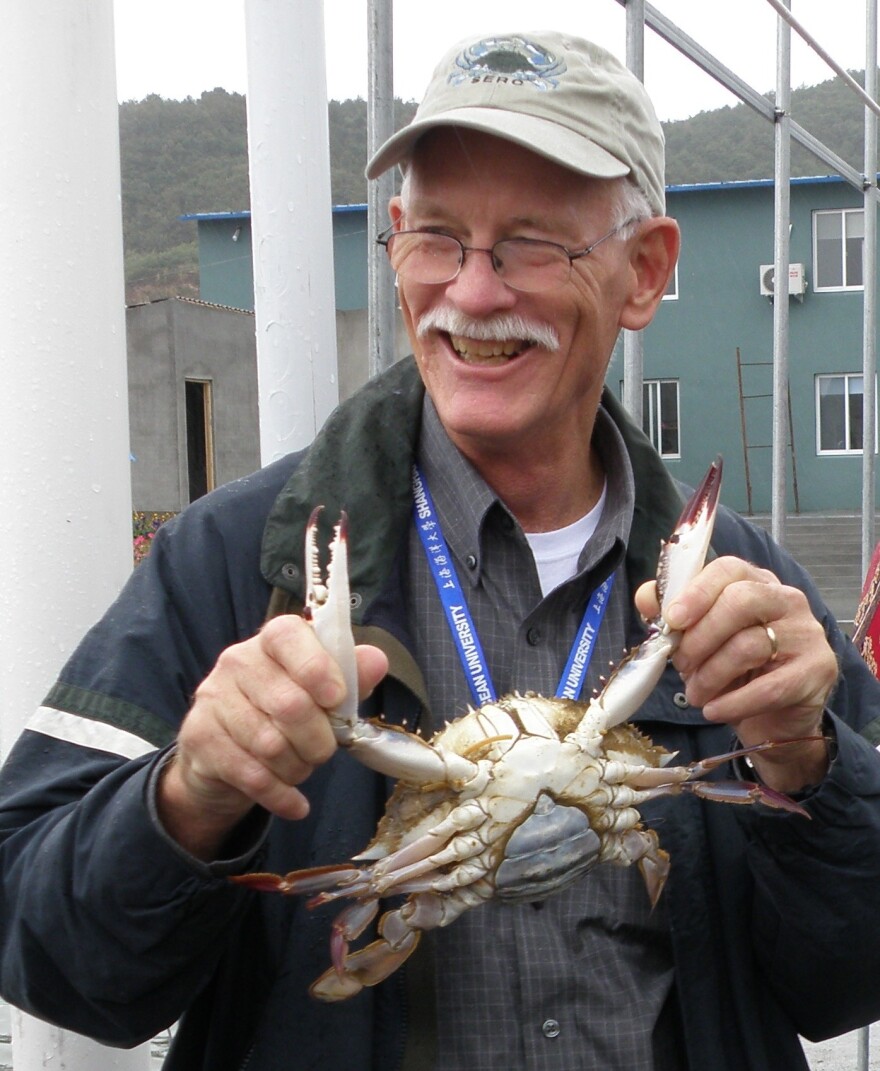Blue crabs are an important part of the Chesapeake region’s culture, diet, and economy. But crab remains are rare in archeological sites around the Bay. This has led some scientists to believe that Native Americans did not eat the beautiful swimmers that today we find so delicious.
“What we know about Native Americans ate is based on some historic records, but also on looking at the trash piles that Indians left, mostly on the shoreline of Chesapeake Bay,” said Tuck Hines, Director of the Smithsonian Environmental Research Center. “And the majority of those trash piles are made up of oyster shells. But not much in the way of blue crab remains are generally found in those trash piles or ‘middens.’”
It might make sense that Native Americans did not eat blue crabs. After all, blue crabs were not a commercially harvested species -- even by European Americans -- until after World War II, when the crab pot was invented as an underwater trap.
In the century before that, oysters were the most popular food from the Chesapeake. It the past, highly targeted seafood included terrapin, American shad, and sturgeon -- all of which were over-fished nearly to extinction, until little was left to eat in the Bay except the ornery, edgy blue crabs.
Maybe Native Americans had no reason to mess with blue crabs centuries ago -- because they had so many other, larger morsels of protein they could pluck from the bay with more ease.
The problem with this theory is that records from the 1600’s show that Native Americans were interested in blue crabs as a source of food.
“If you look back at the records of when colonists arrived, and negotiated fishing peace treaties, including hunting and fishing rights in the Chesapeake Bay region, those descriptions and those treaties including rights for crabbing for finfish as well as a collection of oysters,” Hines said.
If Native Americas were negotiating for crabbing rights, why are crab shells missing from Indian archeological sites, while oyster shells and even fish bones are common? To solve the mystery, Hines and colleagues at the Smithsonian re-examined old trash piles around the Bay using a new technique. They used sieves with a very fine mesh.
Scrutinizing historic sites more closely with these sieves, the researchers discovered tiny fragments of crab shells in 93 different Native American refuse heaps around the Bay, some dating back more than 3,000 years, according to an article that Hines and colleagues published last month in the Journal of Archeological Science titled, “Archaeology, Taphonomy, and Historical Ecology of Chesapeake Bay Blue Crabs.” His co-authors are Torben Rick, Matthew Ogburn, Margaret Kramer, Sean McCanty, Leslie Reeder-Myers and Henry M. Miller.
Their conclusion was: Native Americans, in fact, ate plenty of crabs. But the shells broke down over the centuries, perhaps in part because of acid rain from coal fired power plant pollution in the 20th century.
“The main part of the blue crab that carries forward in these middens are the tips of the claws, which are the most calcified hard part of the crabs,” Hines said.
Analyzing the size of tips of the crab claws they found, the scientists extrapolated how large the crabs must have been. They concluded the crabs caught by Native Americans were much larger than they are now – some twice as large as the typical five inch crab caught today.
“We’ve found middens that contain crabs as large as 10 inches, which is a quite large crab,” Hines said. “So that’s interesting.”
These giant crabs were not a different species. They just lived longer, because they faced less fishing pressure. Crabs today typically do not live more than two or three years because most are quickly scooped up by watermen using dredges or pots. Every year, about half of all the adult crabs in the Chesapeake Bay are caught. But back in Native American times, maybe one percent of blue crabs were harvested every year by people using baited lines and dip nets.
So blue crabs lived as much as twice as long, and grew up to twice as big. Imagine those meaty crab feasts on the Old Chesapeake Bay, with those monster crabs.
The lesson we can learn today from these ancient garbage heaps is that we can have more of what we love if we take less.
....................................
(Photo at top of Tuck Hines and blue crab from Smithsonian Environmental Research Center)




